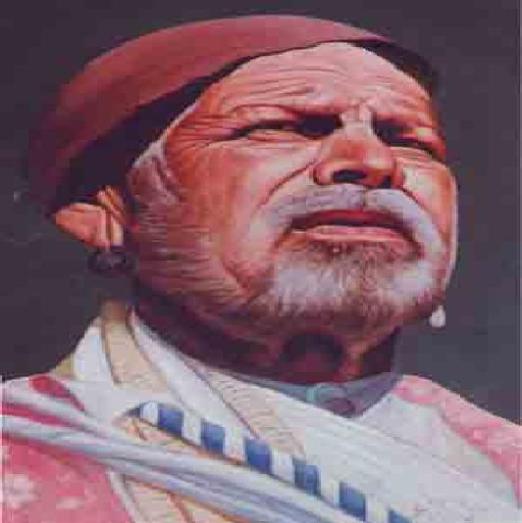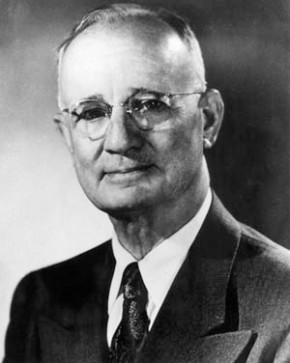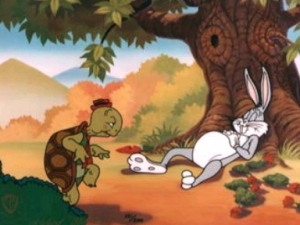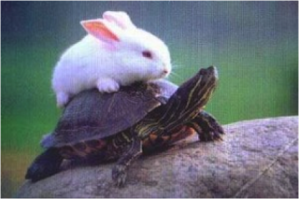The very mention of Rajasthan immediate conjures thoughts of a royal
land replete with Forts and Palaces. I have always wanted to visit
Rajasthan. Accompanied by my wife and son, I finally visited this dream
destination last week. A crisp tour itinerary enabled us to visit –
Jaipur, Pushkar, Bikaner, Jaisalmer and Jodhpur. All this in seven
eventful days! This blog is dedicated to the memorable week we spent in a
colourful and vibrant state in the company of some really hospitable
people.


Our first stop was the State Capital - Jaipur. Since this has much to offer we spent two full days exploring it. On the first day we visited the show piece – Amer Fort (which has been the sight of many film shootings). The sheer size and grandeur of the fort left us spell-bound. On our return we also saw the Jal Mahal – an old palace in the middle of a lake that was in use till recently. Our first day ended in style with a visit to The Albert hall – a palatial mansion which houses the Jaipur State Museum. Artefacts of a by-gone era gave us a insight of the life and times of the royals of those times.
The second day began with a visit to the City Palace – the royal family of Jaipur to this day occupies a part of it. The show piece was a “Buggy Khana” – a garage of more than a dozen royal chariots of all sizes and colors – there was a “Buggy” for every occasion.

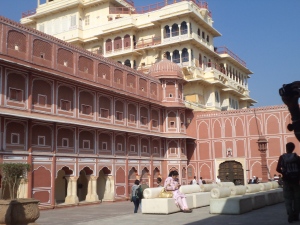
We also saw two huge silver urns known as Gangajalis each weighing more than 345 Kgs – the largest silverware ever built. These were created for carrying Gangajal for the Maharaja bath during his visit to England in 1902! On this day, we also visited the famous Jantar Mantar - an astrological observatory and saw the Hawa Mahal - from where ladies used to watch ceremonial processions in the days gone by.
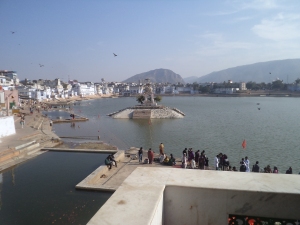
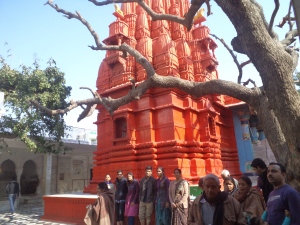
On the third morning we set off early on our Journey to Bikaner. En route we visited the Holy Temple town of Pushkar. This place boast of an incredible number of 1000 temples and is frequented by people from India and abroad. What makes it unique is that Pushkar has the world’s only temple dedicated to Lord Bramha (who is believed to be the creator of the world). We also visited the Meerabai Temple and Memorial (in the town of Merta) and paid our respects to the world famous Devi Karni Mata Temple in Deshnok (on the outskirts of Bikaner. Our driver brought us into Bikaner late in the evening; we had a sumptuous dinner and earned some much needed rest after an eventful day.

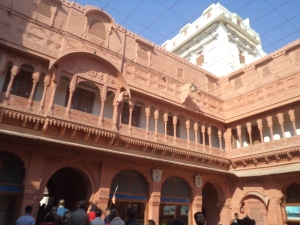
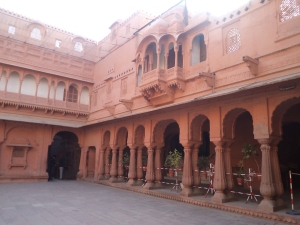
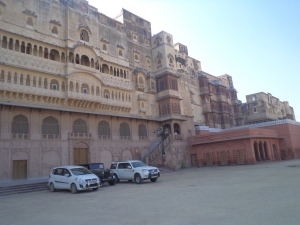
The following day was devoted to sight-seeing in Bikaner. The highlight most definitely was the Junagarh Fort – the royal family residence until 1903. Junagarh is arguably the best maintained Fort in Rajasthan. Among its many showpieces – we found a full size World War I era de-Havilland aircraft housed right in the main durbar hall. It was a gift by the British to Maharaja of Bikaner HH Ganga Singhji. While in Bikaner, we also visited the Lalgarh Palace – the present residence of the Royal Family (a large part of it is now a luxury hotel). Our journey to Jaisalmer began after a sumptuous Lunch at “Lalji” – a famous Bikaner eatery.
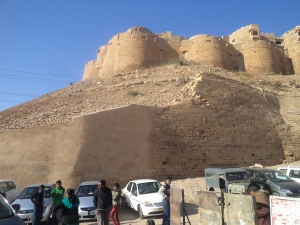
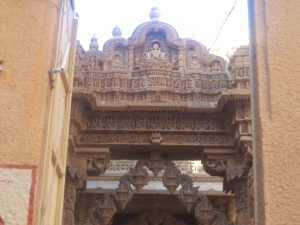
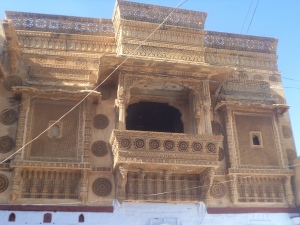
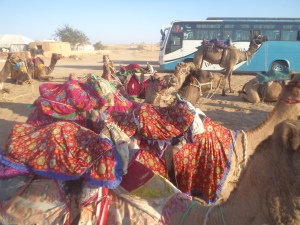
The fifth day - a Saturday; was spent in Jaisalmer, known to many as a living Museum. The star attraction of this town is the old “Sonar Quila” – an old fort built out of yellow sandstone which gives it a distinctly golden look (hence the name). Inside the Fort, there were many magnificent places to see include the Ganesh and Jain Temples. We also visited the famous “Havelis” (palatial mansions) outside the Fort. These used to be residences of rich merchants. A visit to Jaisalmer is incomplete without visiting the Sand Dunes. Seeing the setting sun on a camel quite an experience. We were kept company by a couple of folk artists who rendered delightful Rajasthani Folk Songs.
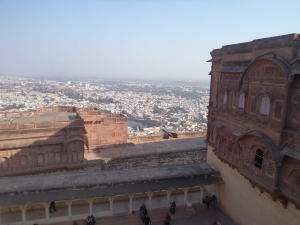

Our final destination – was Jodhpur - the capital city of the erstwhile princely state of Marwar. We arrived in the afternoon on Day Six and straight away visited the magnificent and awesome Mehrangarh Fort. The guide told us that this was the only fort in Rajasthan that was never captured by force – quite simply it was too difficult for anyone to conquer. We spent the evening shopping in the bustling bazaars of Ghanta Ghar (Clock Tower)
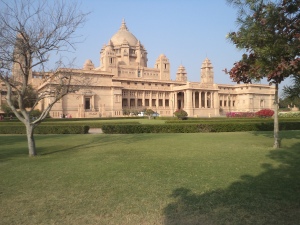
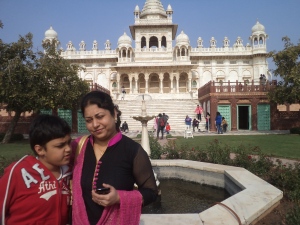
Next morning we visited the Umed Bhawan Palace – (the royal family’s present residence). Our trip concluded with a visit to the Jaswant Thada – a memorial dedicated to Maharaja Jaswant Singh of Jodhpur. This trip has left with many pleasant memories which we shall cherish for a life time.

I sign off this blog with a wish that you too get an opportunity to visit this wonderful land. Thanks for reading.


Our first stop was the State Capital - Jaipur. Since this has much to offer we spent two full days exploring it. On the first day we visited the show piece – Amer Fort (which has been the sight of many film shootings). The sheer size and grandeur of the fort left us spell-bound. On our return we also saw the Jal Mahal – an old palace in the middle of a lake that was in use till recently. Our first day ended in style with a visit to The Albert hall – a palatial mansion which houses the Jaipur State Museum. Artefacts of a by-gone era gave us a insight of the life and times of the royals of those times.
The second day began with a visit to the City Palace – the royal family of Jaipur to this day occupies a part of it. The show piece was a “Buggy Khana” – a garage of more than a dozen royal chariots of all sizes and colors – there was a “Buggy” for every occasion.


We also saw two huge silver urns known as Gangajalis each weighing more than 345 Kgs – the largest silverware ever built. These were created for carrying Gangajal for the Maharaja bath during his visit to England in 1902! On this day, we also visited the famous Jantar Mantar - an astrological observatory and saw the Hawa Mahal - from where ladies used to watch ceremonial processions in the days gone by.


On the third morning we set off early on our Journey to Bikaner. En route we visited the Holy Temple town of Pushkar. This place boast of an incredible number of 1000 temples and is frequented by people from India and abroad. What makes it unique is that Pushkar has the world’s only temple dedicated to Lord Bramha (who is believed to be the creator of the world). We also visited the Meerabai Temple and Memorial (in the town of Merta) and paid our respects to the world famous Devi Karni Mata Temple in Deshnok (on the outskirts of Bikaner. Our driver brought us into Bikaner late in the evening; we had a sumptuous dinner and earned some much needed rest after an eventful day.




The following day was devoted to sight-seeing in Bikaner. The highlight most definitely was the Junagarh Fort – the royal family residence until 1903. Junagarh is arguably the best maintained Fort in Rajasthan. Among its many showpieces – we found a full size World War I era de-Havilland aircraft housed right in the main durbar hall. It was a gift by the British to Maharaja of Bikaner HH Ganga Singhji. While in Bikaner, we also visited the Lalgarh Palace – the present residence of the Royal Family (a large part of it is now a luxury hotel). Our journey to Jaisalmer began after a sumptuous Lunch at “Lalji” – a famous Bikaner eatery.




The fifth day - a Saturday; was spent in Jaisalmer, known to many as a living Museum. The star attraction of this town is the old “Sonar Quila” – an old fort built out of yellow sandstone which gives it a distinctly golden look (hence the name). Inside the Fort, there were many magnificent places to see include the Ganesh and Jain Temples. We also visited the famous “Havelis” (palatial mansions) outside the Fort. These used to be residences of rich merchants. A visit to Jaisalmer is incomplete without visiting the Sand Dunes. Seeing the setting sun on a camel quite an experience. We were kept company by a couple of folk artists who rendered delightful Rajasthani Folk Songs.


Our final destination – was Jodhpur - the capital city of the erstwhile princely state of Marwar. We arrived in the afternoon on Day Six and straight away visited the magnificent and awesome Mehrangarh Fort. The guide told us that this was the only fort in Rajasthan that was never captured by force – quite simply it was too difficult for anyone to conquer. We spent the evening shopping in the bustling bazaars of Ghanta Ghar (Clock Tower)


Next morning we visited the Umed Bhawan Palace – (the royal family’s present residence). Our trip concluded with a visit to the Jaswant Thada – a memorial dedicated to Maharaja Jaswant Singh of Jodhpur. This trip has left with many pleasant memories which we shall cherish for a life time.

I sign off this blog with a wish that you too get an opportunity to visit this wonderful land. Thanks for reading.
